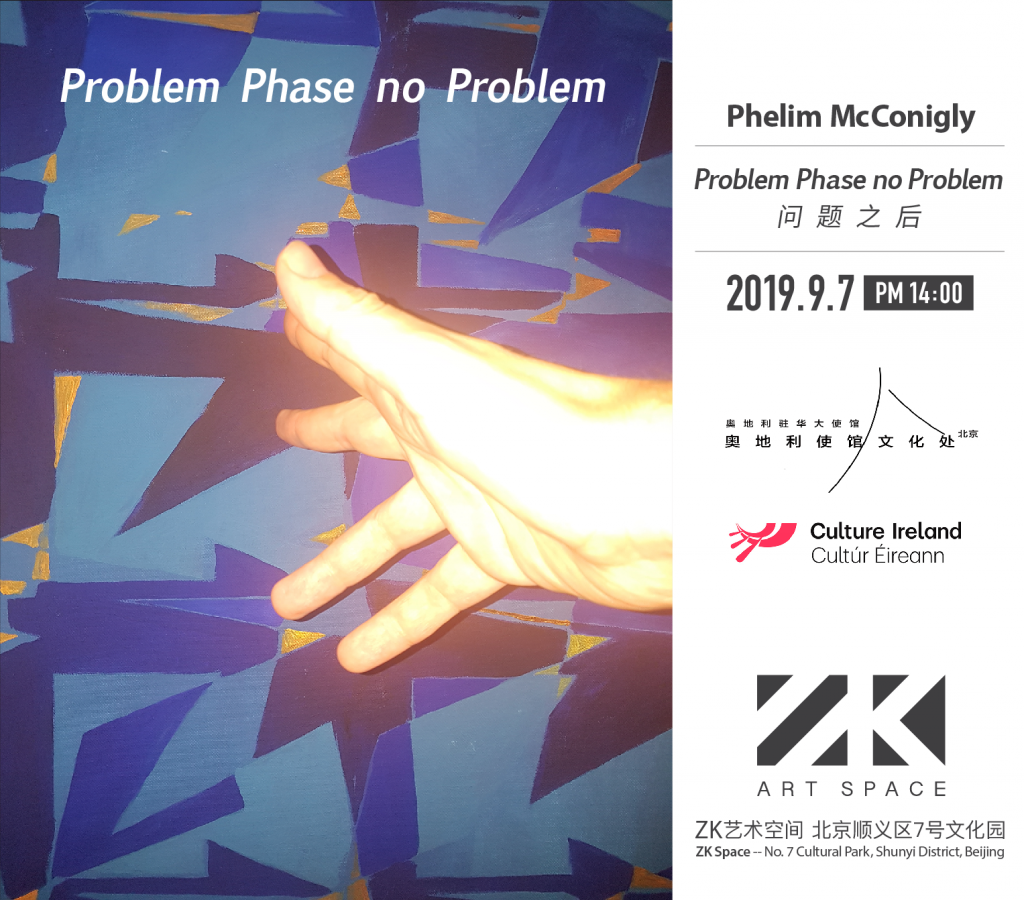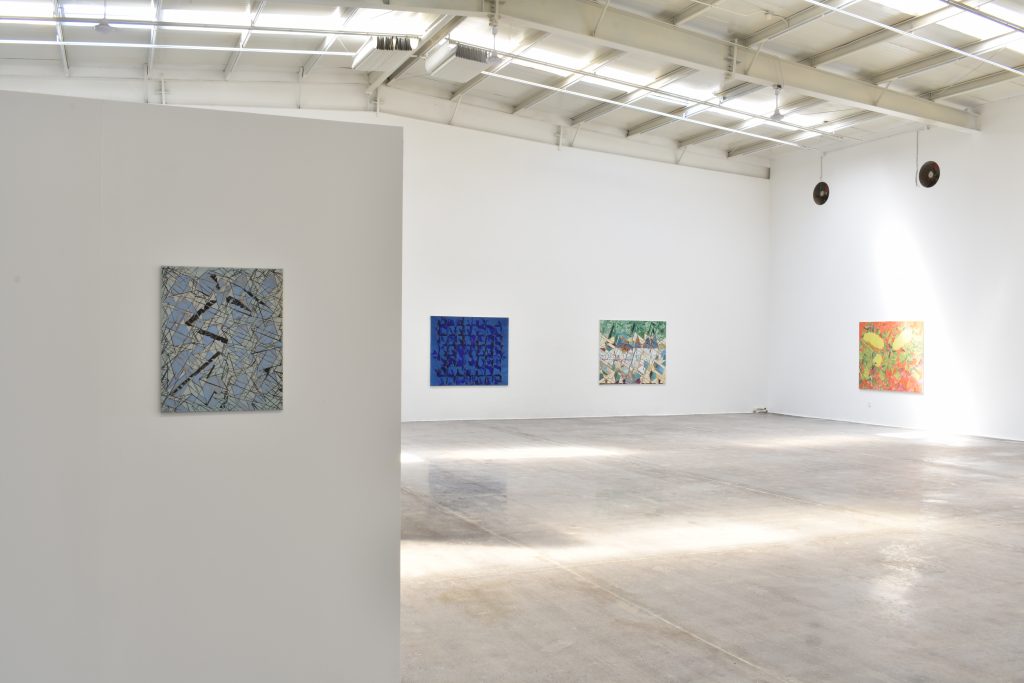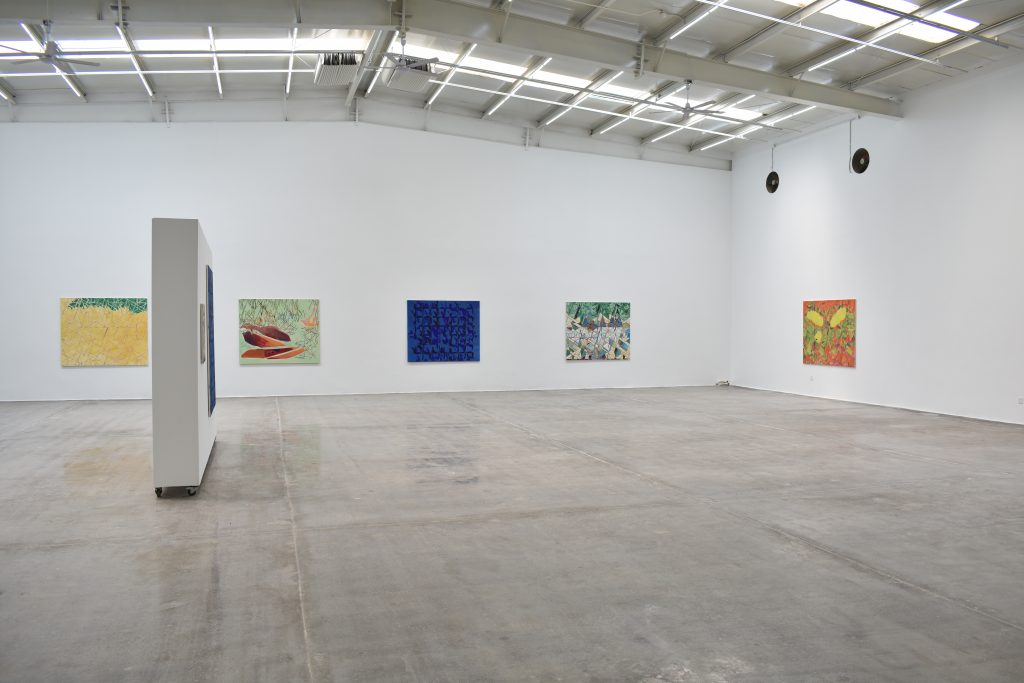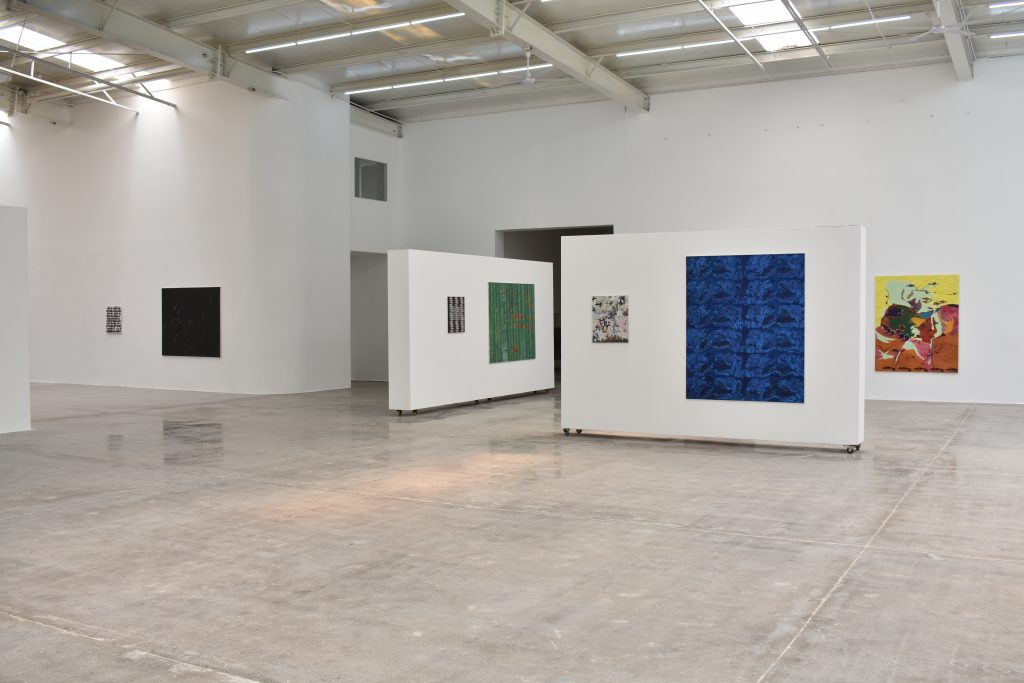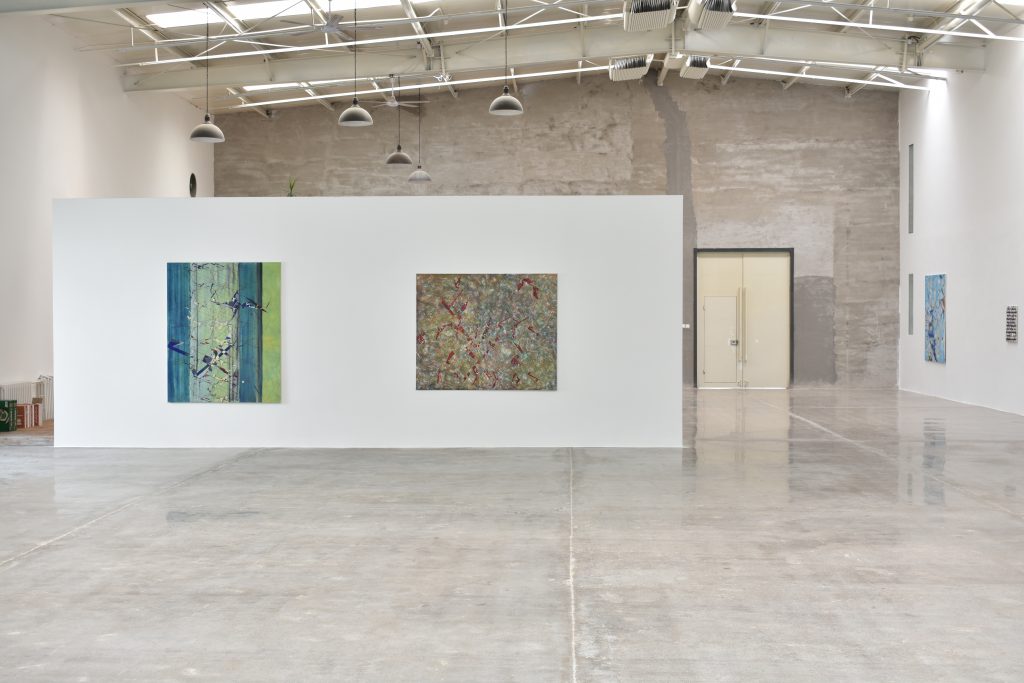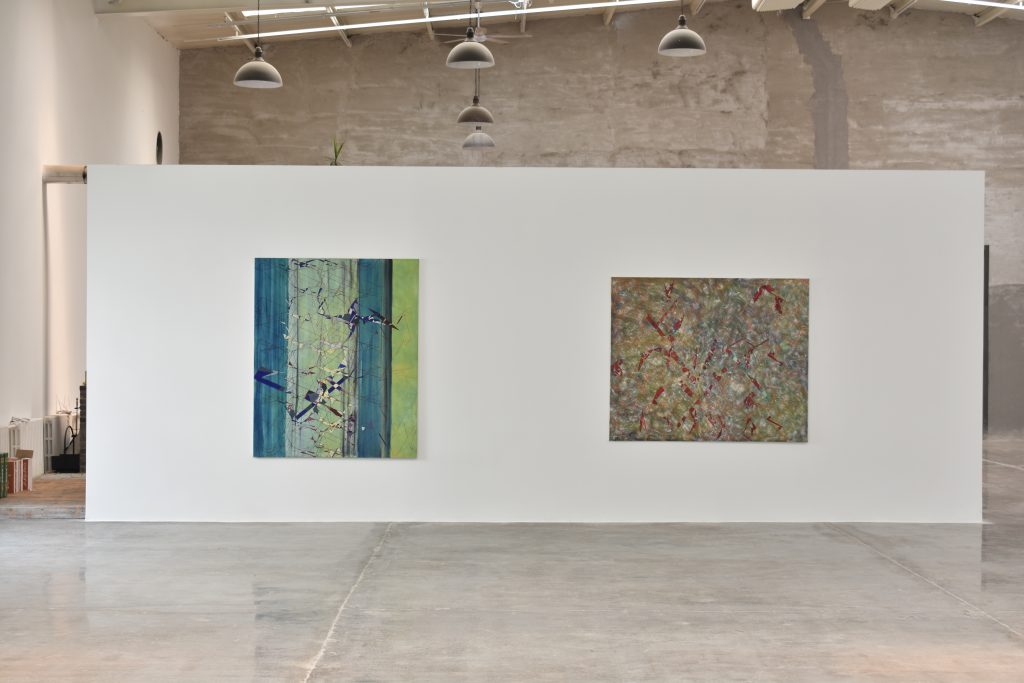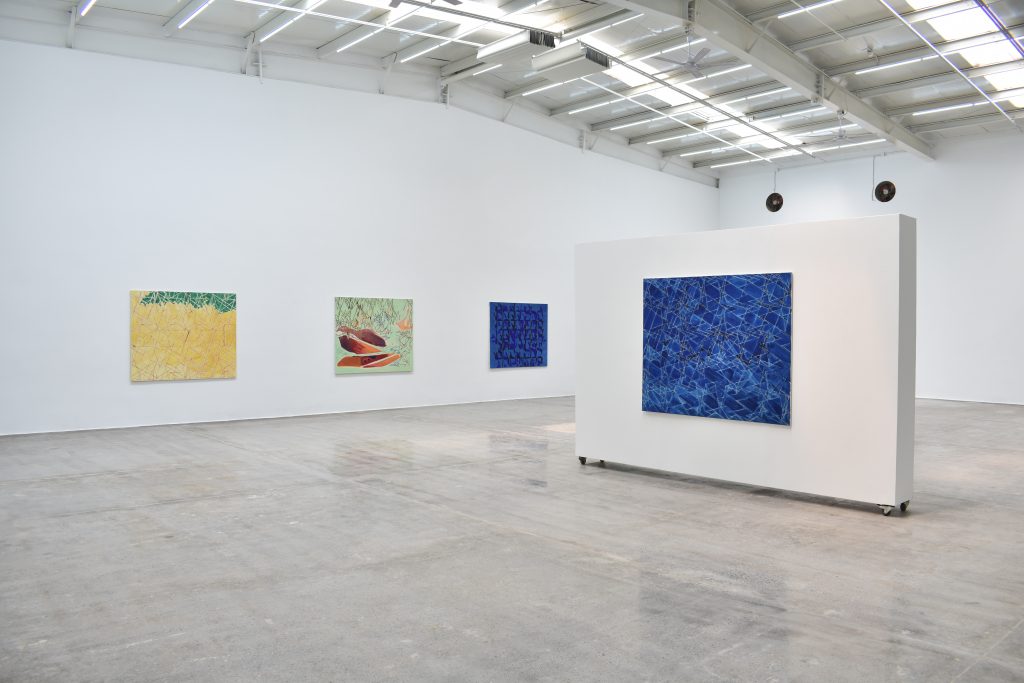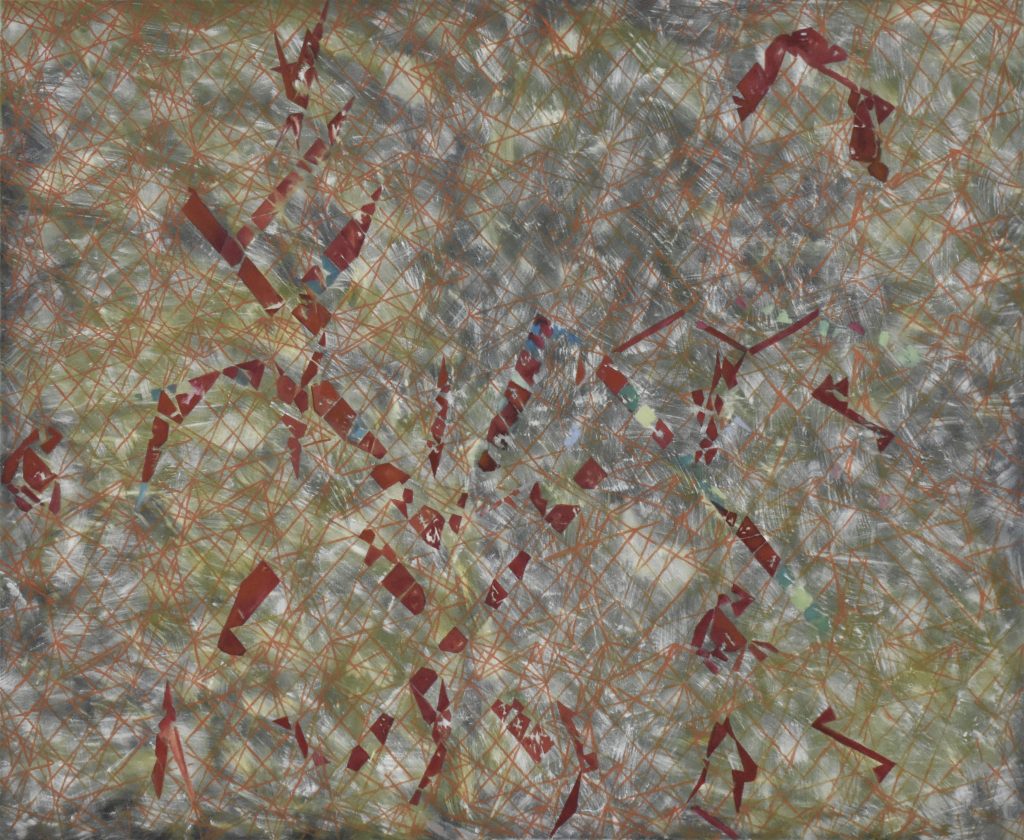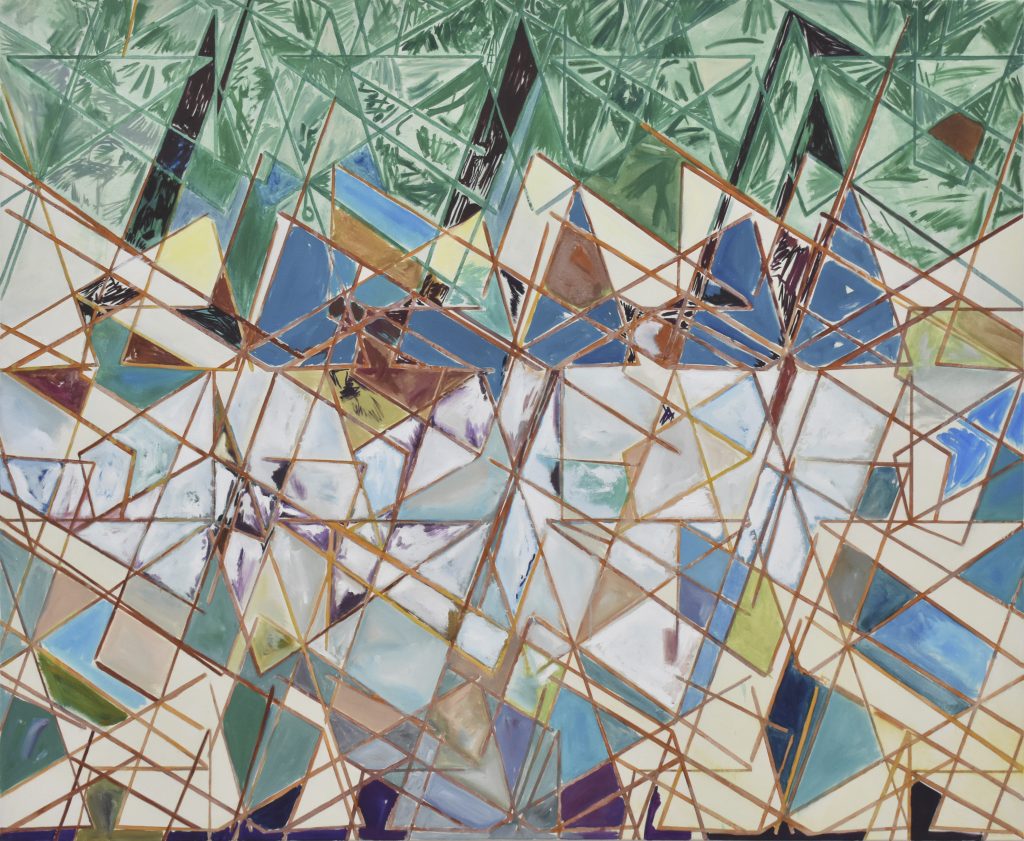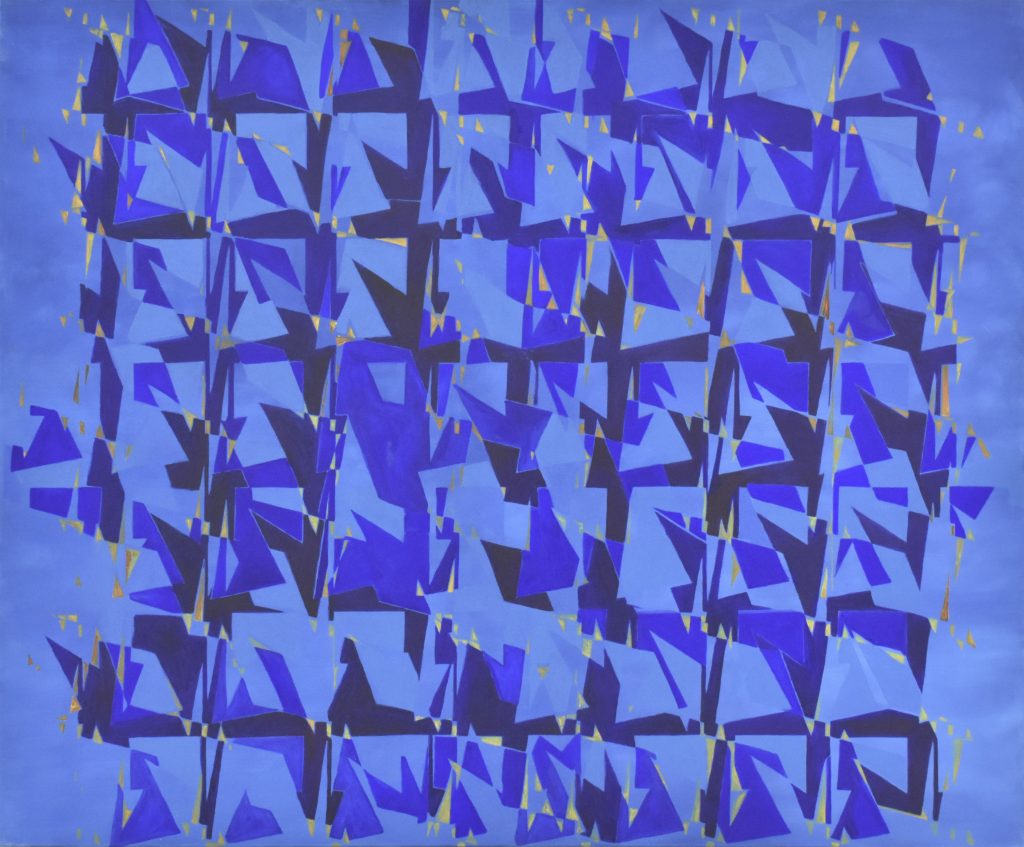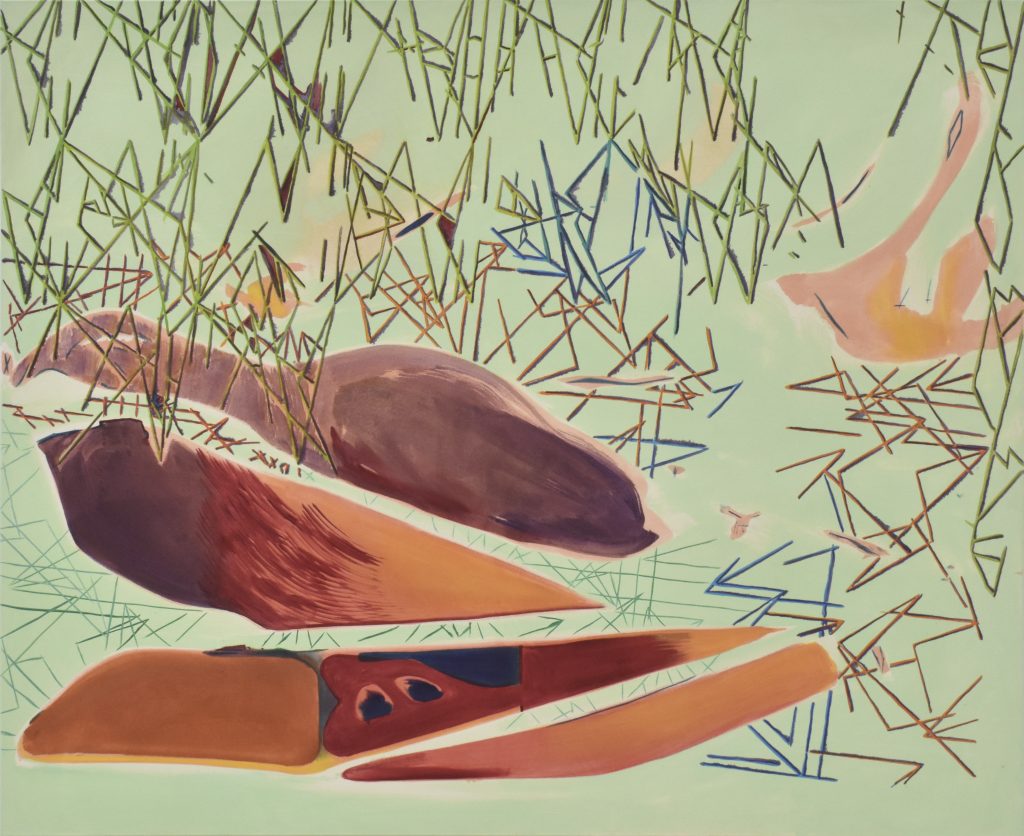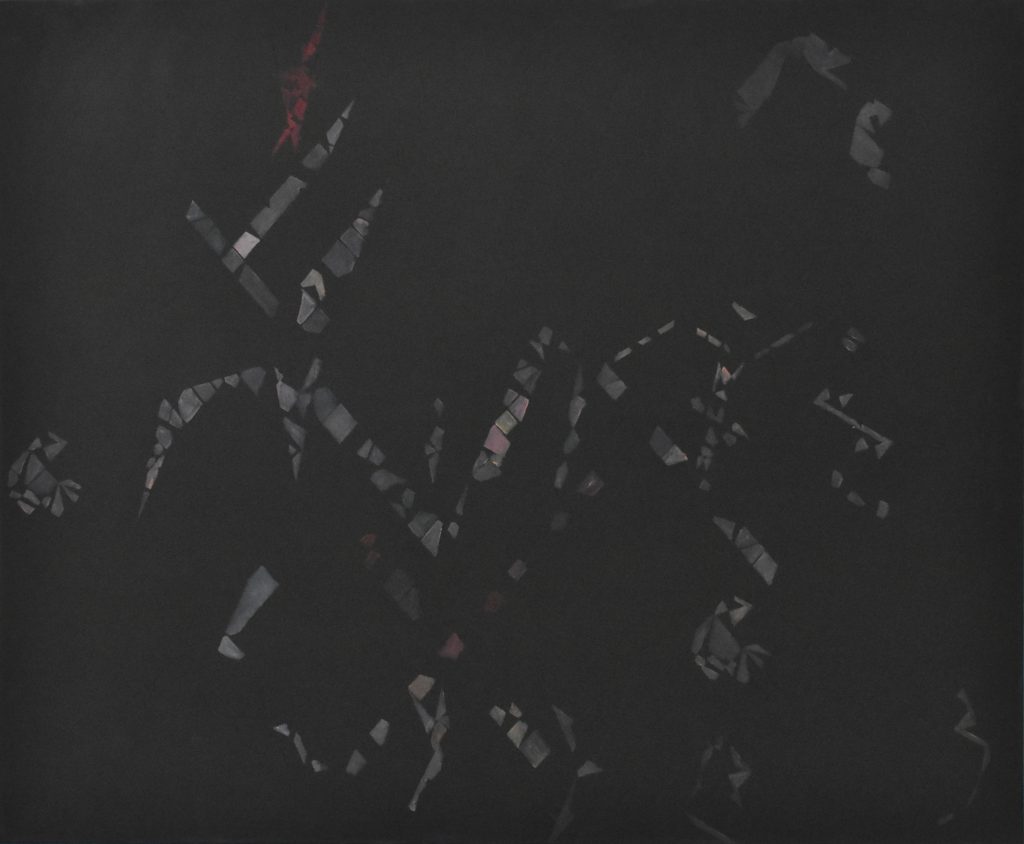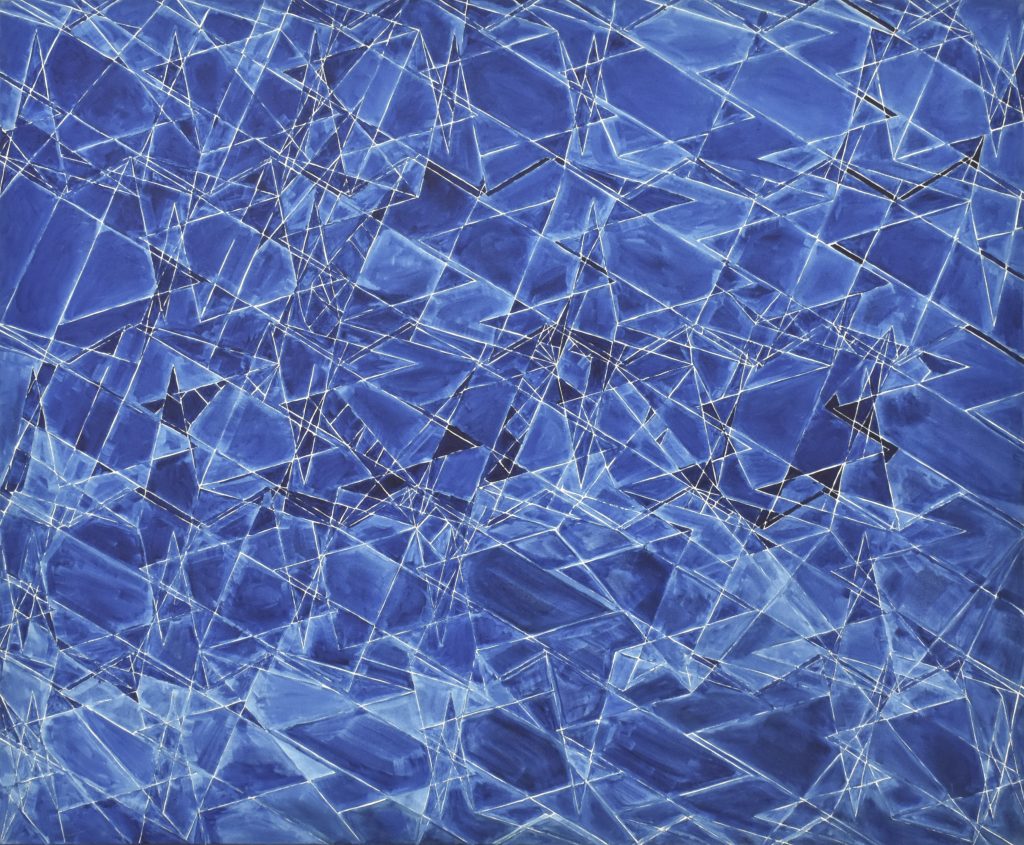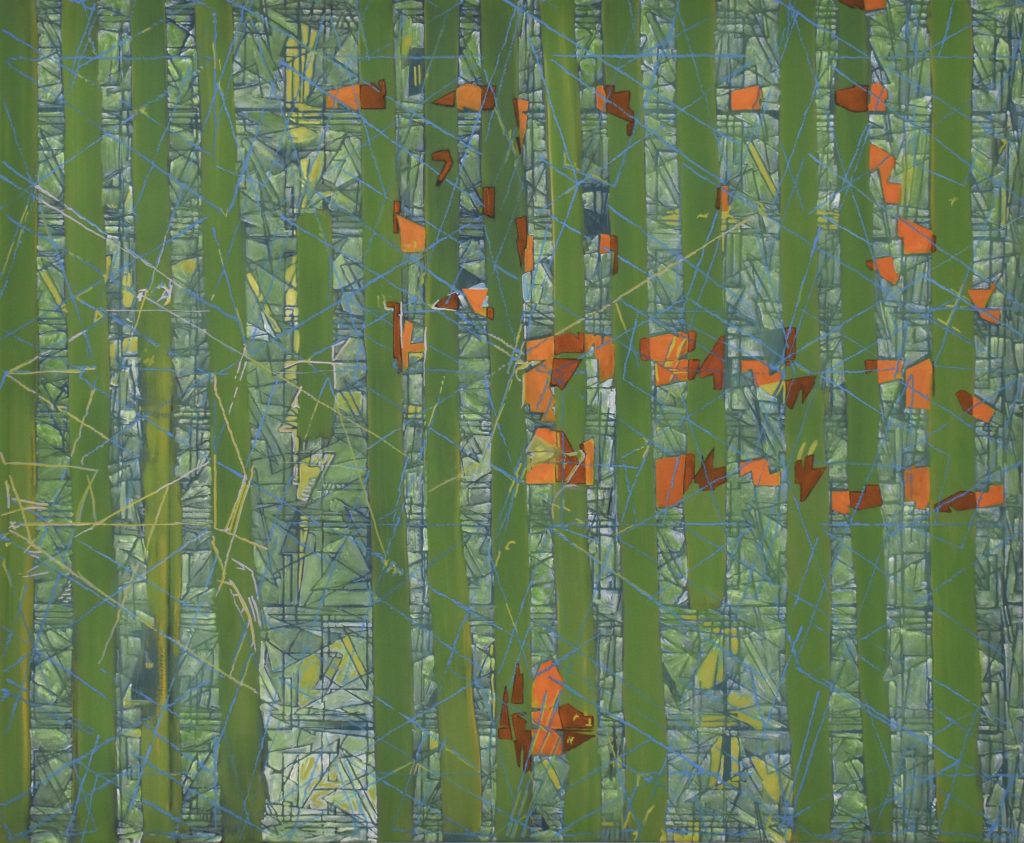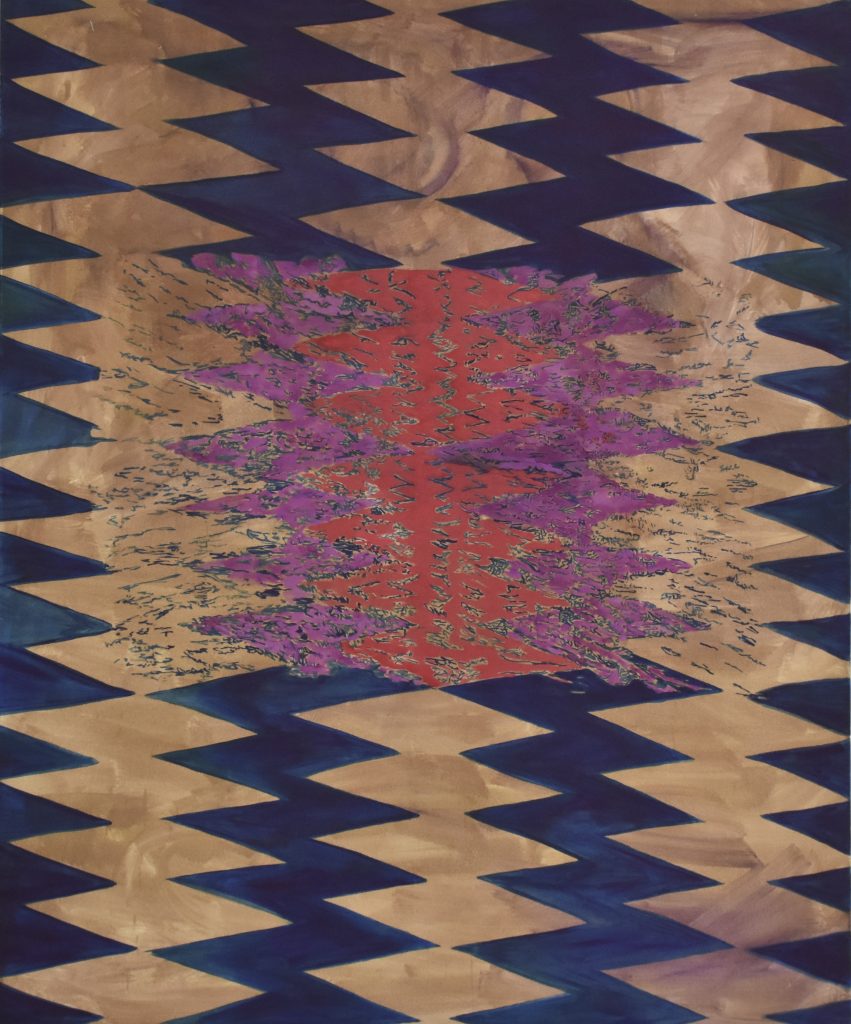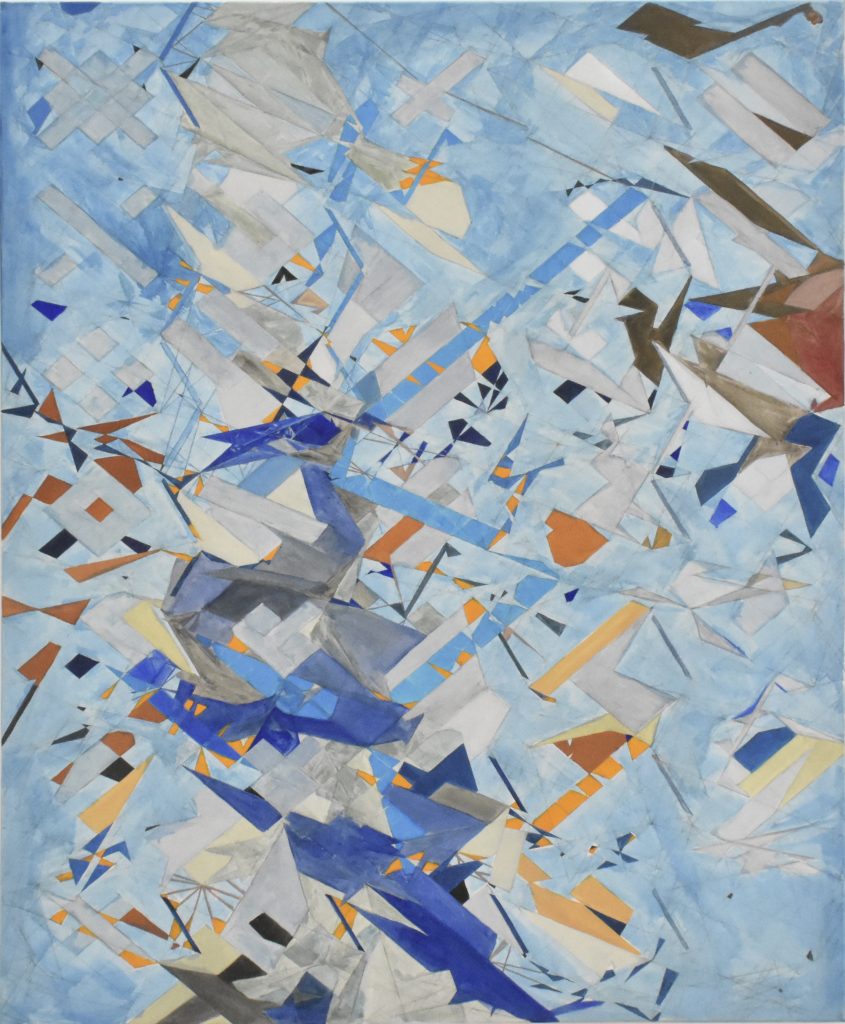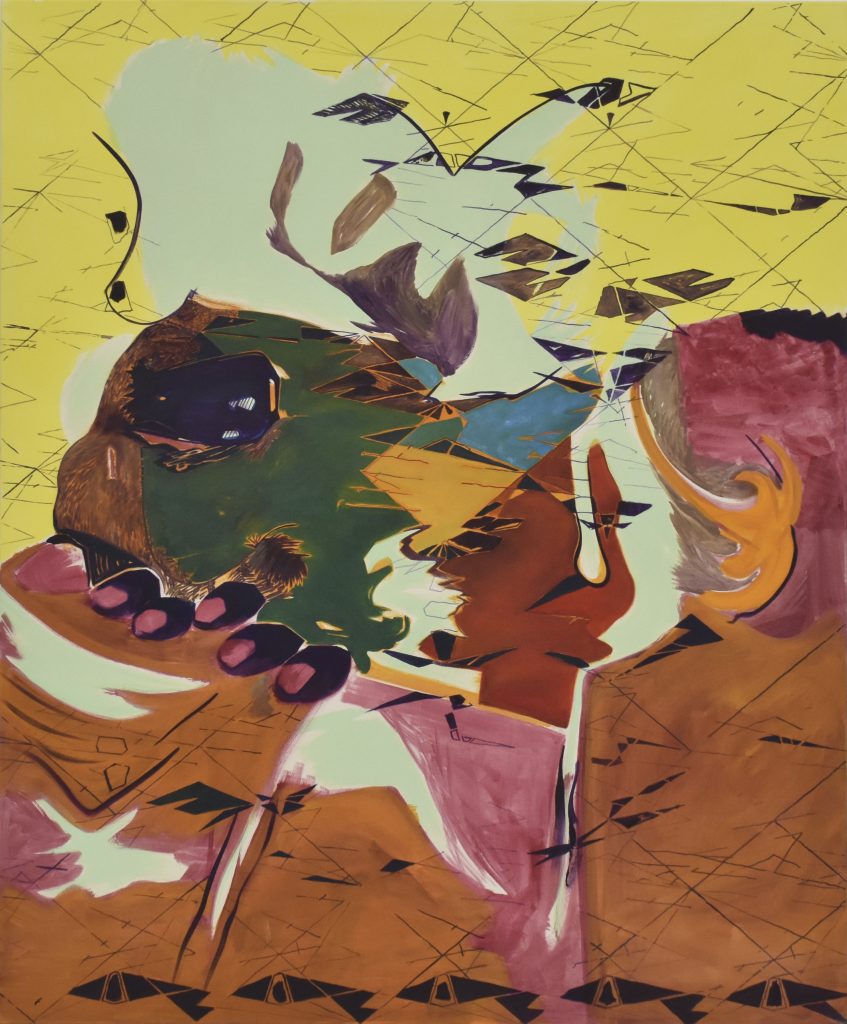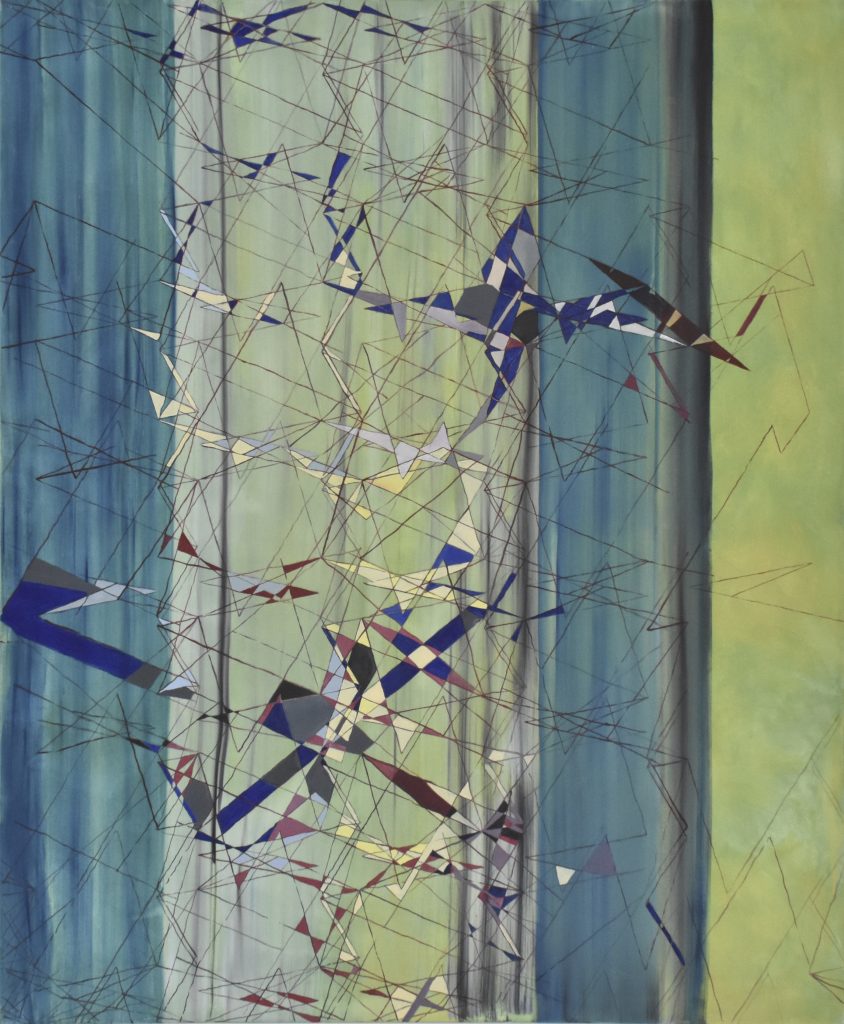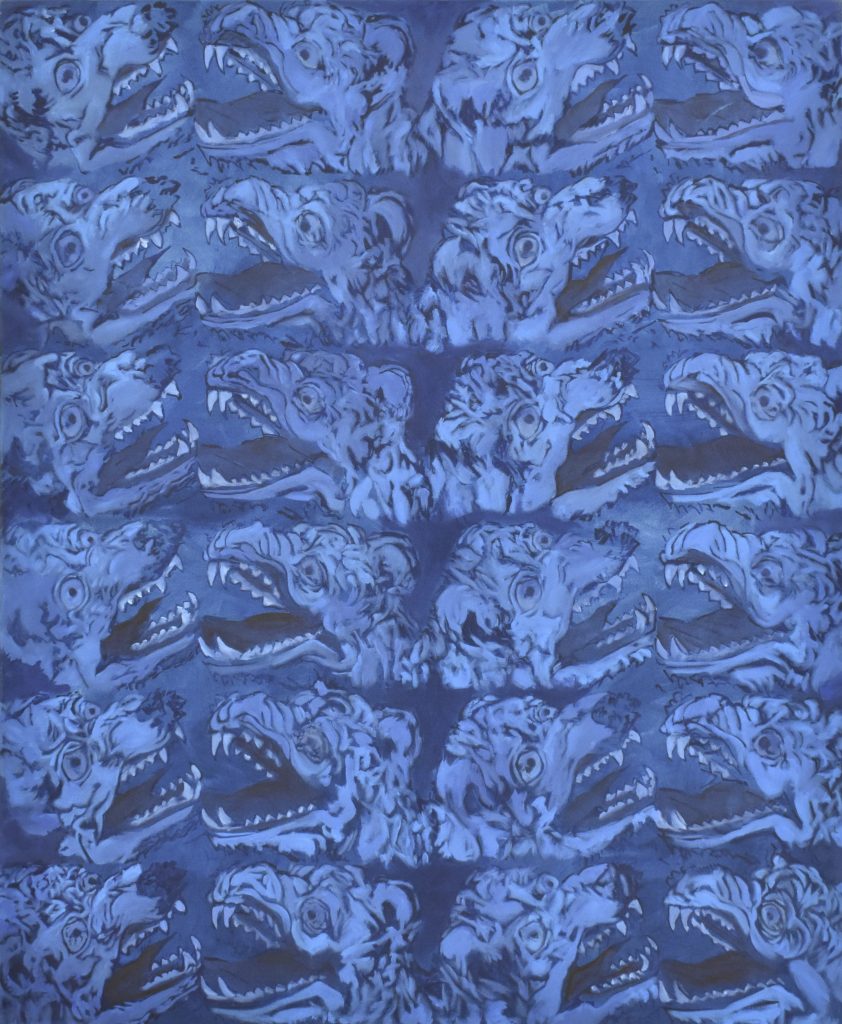Problem Phase no Problem
McConigly’s proposition for the series of works in the exhibition “Problem Phase no Problem” lies in the use of flat, entangled imagery – the heaviness of interfering patterns and hard edges. The flat patterns as a starting point creates a restrictive one dimensional surface which is then confronted and enabled through a vocabulary of abstract forms.
To this end, the paintings can be seen as undergoing a kind of phase shift, where colour and structure are altered through multiple positions – problem solving through transformative abstraction. This extreme flatness combined with constant signals, actions, and decisions bring a disruptive visual approach to the problem of painting.
Whether impulsively or gradually, this process refocuses the work, allowing it to become more than its constituent parts, creating paintings which are sinister in their use of line, impulsive in their expression, and open in their possibility of interpretation. Engaging with altering trajectories in this way allows the work to take on suggestive and informative dimensions for the viewer.
Problem Phase no Problem
Its as if the problem, the one we began with, contained no visible connotations.
(And afterwards? What would it be after you moved it / phased it?)
The phase thing happens at all stages, it’s not concentrated to only one part of the process.
(But I thought you were trying to find the…)
Wait. Imagine you take a round object and move it through an open space.
No wait, not round, but elliptical and spherical… what’s it called? Ellipsoid.
(You lost me.)
Wait. I haven’t even…
(!)
If you fold a plane awkwardly over the ellipsoid, such that the plane crumbles like a sheet of paper that contains a drawing, but nothing came of it,
(Aside: Whats the drawing? – chorus / multiply “we need to see that”)
…then the points where the folds touch the ellipsoid, or where the scratched surface reappears – that is the starting point of the painting, except now on a flat surface, which is reshaped sometimes back into objects with depth.
(Which phase are we in now?)
The difficulty now is transference – from one
(…idea to another…. / You got it!)
… from one mode of decision making to another, trying to solve it in different ways.
(would one way not be enough, and what would the solution try to be?)
A fair question. Harmony…
(Chorus)
